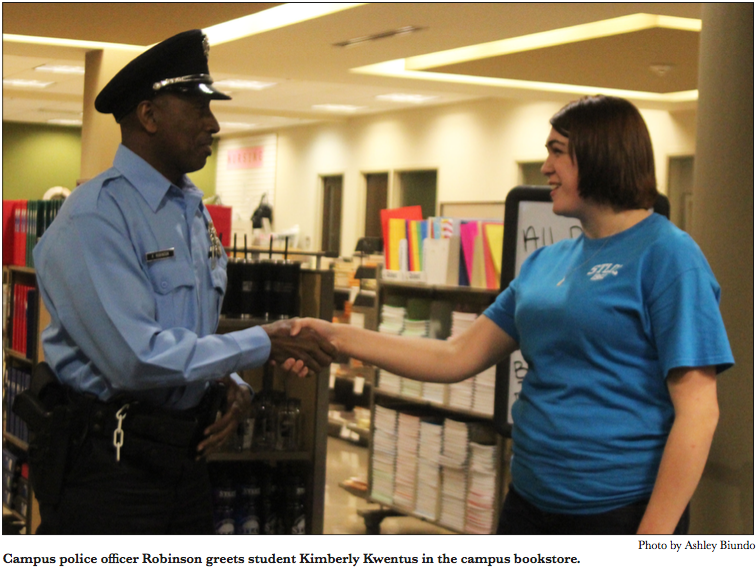Connecting students with appropriate resources
By: KATELYN ERICSON
Staff Writer
They say the best defense is a good offense. At STLCC-Meramec, the offense is a team of four who have strategized and helped students succeed since 2008, according to original team member Linda Nissenbaum, manager at the Access Office. They are the Behavioral Intervention Team (BIT).
member Linda Nissenbaum, manager at the Access Office. They are the Behavioral Intervention Team (BIT).
Meramec’s BIT is a member of the National Behavioral Intervention Association (NaBITA). According to NaBITA’s website, BIT was not designed as a response to campus shootings and violence, but as a proactive method of addressing the increasing need at universities and colleges for a central, organized, caring and developmental intervention program for people in need — prior to crisis.
“BIT gives the opportunity to staff, faculty and students to report unusual behaviors,” Vice President of Student Affairs Kim Fitzgerald said. “Once an incident has been reported, BIT will refer the student, staff or faculty member to counselors and the Access Office.”
Some of the cases may be referred to mental health resources that are not connected with Meramec, Fitzgerald said.
The foundation for BIT at Meramec was laid in April 2008, Nissenbaum said. Student Affairs, the Access Office and Personal Counseling collaborated to create the handbook that is now called ‘Maintaining Positive Student Interactions.’
“We encouraged people to report concerning behavior,” Nissenbaum said. “It is meant to be informative so we could help. We’ve been able to support faculty and staff. We work together to come up with ideas about how to solve situations with the best possible outcomes.”
Meramec’s team is comprised of Fitzgerald, Chief of Campus Police Anthony Russo, Nissenbaum and Counselor/Professor Hope Steiner. They meet every other week.
The team members come from various backgrounds. This varied composition brings different perspectives to the table in considering behavioral issues, Fitzgerald said. Reported concerns range from plagiarism to students riding their bicycles in buildings.
What is most important to BIT is that the team members connect the students with the appropriate resources, Fitzgerald said. In the event of a violent situation or threat, BIT would be in contact with the local police.
“Our major priority is not discipline,” Russo said. “It’s about support first. Our priority is to keep the student in school and get them the help they need and then, last, disciplinary issues.”
Each campus has one Behavioral Intervention Team that receives NaBITA training. Meramec’s BIT additionally covers South County Education and University Center.
“BIT is not punitive. It’s proactive,” Nissenbaum said. “We get help to the student so they can have success at STLCC.”
All STLCC Behavioral Intervention Teams use the software Maxient, Fitzgerald said. They enter reports into this database, allowing all teams to share the information with all of the campuses. During the semester, BIT chairs meet several times to discuss issues.
“Our main concern is to get information,” Nissenbaum said. “We wanted to have a way to gather information to let us know about the things that are going on around campus.”
The team is kept small to ensure efficiency, Fitzgerald said. When the need arises, other faculty will be called on to help.
“Faculty and staff have been just great. They have been good partners in this,” Fitzgerald said.
At www.stlcc.edu/BIT, students, staff and faculty can fill out the Behavior Incident Report form. The report can be submitted anonymously, although BIT prefers the reporter to give his or her name, Nissenbaum said.
The types of issues to report include behaviors of concern — such as a major change in the personality of someone, Russo said.
“The role of BIT is for it to be proactive and get positive results,” Nissenbaum said.
Another safety measure similar to the BIT reports is the ‘See something, say something’ campaign promoted by campus police, Russo said. Students can and should report concerns directly to the campus police by calling 314-984-7667.
“I would like to reassure our students that we have systems in place to address situations,” Fitzgerald said. “We take behavior seriously. We are on top of this and are being responsive to reports.”











